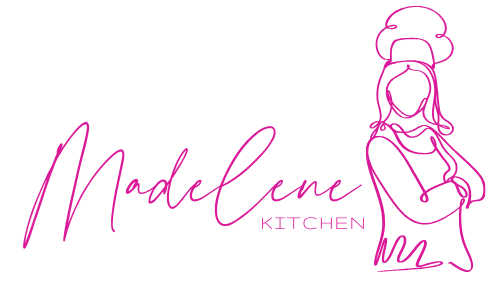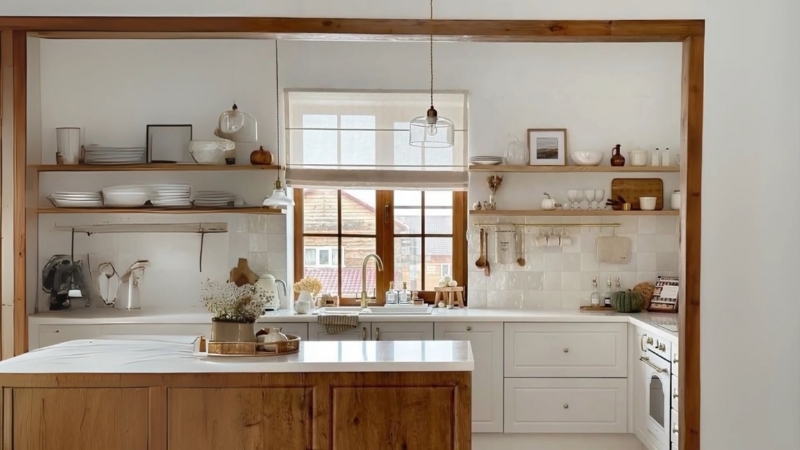Modern kitchens embrace sleek lines, minimal clutter, and functional design, while farmhouse style brings a cozy, country-inspired feel with vintage touches.
Rustic style focuses on natural textures, organic elements, and an earthy, grounded aesthetic.
The aim here is to weave rustic warmth into a modern kitchen without committing fully to the farmhouse theme.
The trend is evolving, moving toward modern rustic and cottagecore aesthetics that soften contemporary spaces with natural and vintage influences.
The Foundation
Modern rustic kitchens create an elegant balance between contemporary sleekness and the warmth of nature.
A successful design relies on a thoughtful mix of materials and finishes, resulting in a space that feels both functional and inviting.
Wood, stone, and metal provide structure, while a palette of soft greys, warm beiges, and crisp whites forms a calming backdrop.
Clean architectural lines maintain a modern character, while textured finishes add depth and tactile variety.
In contrast to full farmhouse style, modern rustic avoids heavy distressing, elaborate carvings, and themed motifs.
Decorative elements such as shiplap, barn doors, or overt country patterns are used sparingly, if at all.
The overall impression is one of refinement paired with warmth, offering timeless style anchored in the efficiency of modern design principles.
Core characteristics of modern rustic kitchens include:
Key Design Elements to Introduce Rustic Charm
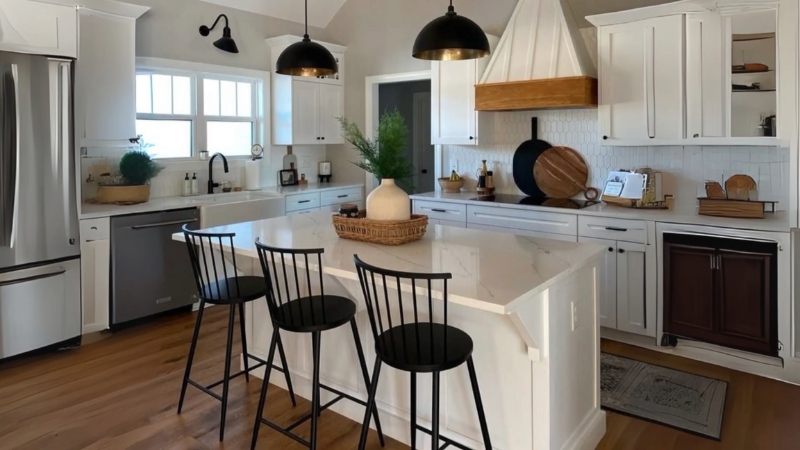
Designing a modern rustic kitchen is all about introducing elements strategically so they add personality without overpowering the core modern structure.
Here are key aspects that help achieve that goal:
Wood Accents
Warm wood tones can transform a kitchen instantly.
The goal is to bring in natural beauty without overwhelming sleek surfaces.
Ways to use wood effectively:
Natural Stone and Textures
View this post on Instagram
Stone brings both durability and an earthy presence to the kitchen.
Textured surfaces catch the eye and invite touch, creating a sense of depth in an otherwise minimal setting.
Ideas for incorporating stone:
Vintage and Antique Touches
Vintage details give a kitchen soul without creating a cluttered or overly themed environment.
The aim is to choose items that feel curated and intentional.
Possible additions include:
Farmhouse Sink with a Twist
This farmhouse scullery with a butler sink is ever so pretty. More kitchen design ideas » https://t.co/TZgUP1Fv2B pic.twitter.com/VjnAkreCaz
— House & Garden Magazine (@_houseandgarden) April 21, 2016
A farmhouse sink can act as a focal point when adapted for a modern rustic style.
The material and hardware choices will determine its impact on the overall look.
Tips for a modern take on the farmhouse sink:
Layering Warmth Without Overcommitting
Adding warmth to a modern kitchen requires balance.
Too many rustic elements can tip the space into a themed look, while too few might leave it feeling cold and sterile.
The key lies in layering details that introduce texture, comfort, and personality without compromising the sleek foundation.
Functional Freestanding Furniture
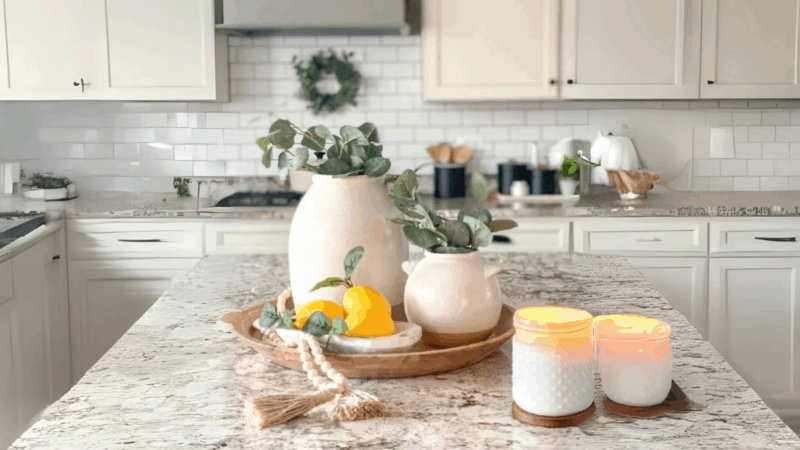
A well-chosen freestanding piece can instantly create a visual anchor in the kitchen.
Instead of replacing entire cabinetry runs, one substantial furniture element can shift the tone toward rustic while allowing the modern framework to remain dominant.
These pieces not only bring texture but also add storage and practicality.
Examples of functional freestanding furniture that work well in a modern rustic space include:
Soft Furnishings and Cozy Textiles
Textiles play an essential role in making a kitchen feel lived-in and welcoming.
They can soften sharp architectural lines and add subtle color or pattern without overwhelming the space.
Introducing rugs, curtains, and seat cushions in natural fibers creates an immediate sense of comfort.
Key textile ideas for a balanced rustic touch include:
Statement Lighting
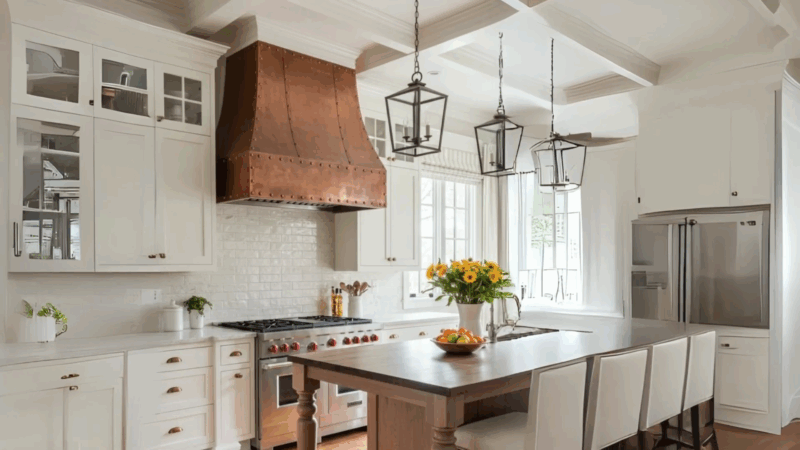
Lighting has the power to tie a design together and highlight key features.
In a modern rustic kitchen, lighting choices can bridge the gap between sleek cabinetry and natural textures.
Industrial-inspired shapes, or fixtures that combine materials like wood and metal, work especially well.
Lighting strategies to enhance a modern rustic kitchen include:
Color Palette and Paint Strategy
Creating the right color scheme is essential for achieving a modern rustic kitchen that feels balanced and inviting.
A thoughtful approach to color allows natural materials such as wood, stone, and metal to take center stage without being overshadowed.
Muted hues work particularly well in this style, offering subtle personality without competing against texture.
Gentle color shifts between cabinetry, walls, and furnishings can help define zones within the kitchen while keeping the overall flow cohesive.
Two-tone cabinetry remains a popular choice, introducing contrast while still maintaining visual unity.
Below is a list of recommended strategies for achieving a modern rustic palette:
Such combinations make it possible to introduce warmth and variation without slipping into an overly rustic or overly modern aesthetic.
Mistakes to Avoid
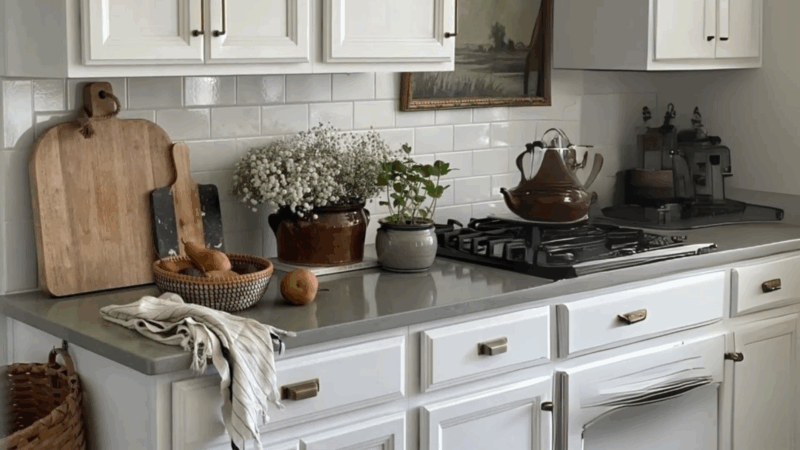
Even with the best intentions, it is easy to overcompensate when adding rustic charm to a modern kitchen.
Overuse of themed or novelty decor risks turning a well-designed space into something that feels staged rather than lived in.
Restraint in decorative elements ensures that natural textures and carefully chosen accents remain the focus.
Too many distressed finishes or mismatched rustic items can create visual noise that detracts from the clean structure of a modern kitchen.
Instead of layering countless details, let a few standout pieces make the statement.
Key mistakes to be aware of include:
The Bottom Line
@sixat21 Rustic charm is not for everyone, but I just can’t help myself ♥️ . #cottagekitchendecor #myktchn #myrustichome #modernrustichome #modernrusticdecor #smallkitchens #kitchenstory #countrycottagestyle #kitchenliving #cottageinteriors #homeandkitchen #slowlivingforlife #simplepleasure #simplelivinglifestyle #freestandingkitchen #bespokejoinery #bespokekitchens #bespokefurnituredesign ♬ La dolce vita (In via Veneto) – Remastered 2017 – Carlo Savina
Modern kitchens benefit greatly from the warmth of natural textures and vintage accents.
Achieving harmony between sleek function and rustic soul comes down to thoughtful selection.
Imperfection in select elements, like a worn wood stool or handcrafted pottery, adds depth without turning the space into a set-piece.
Rustic charm is best expressed through intentional choices that enhance everyday living in a modern environment.
